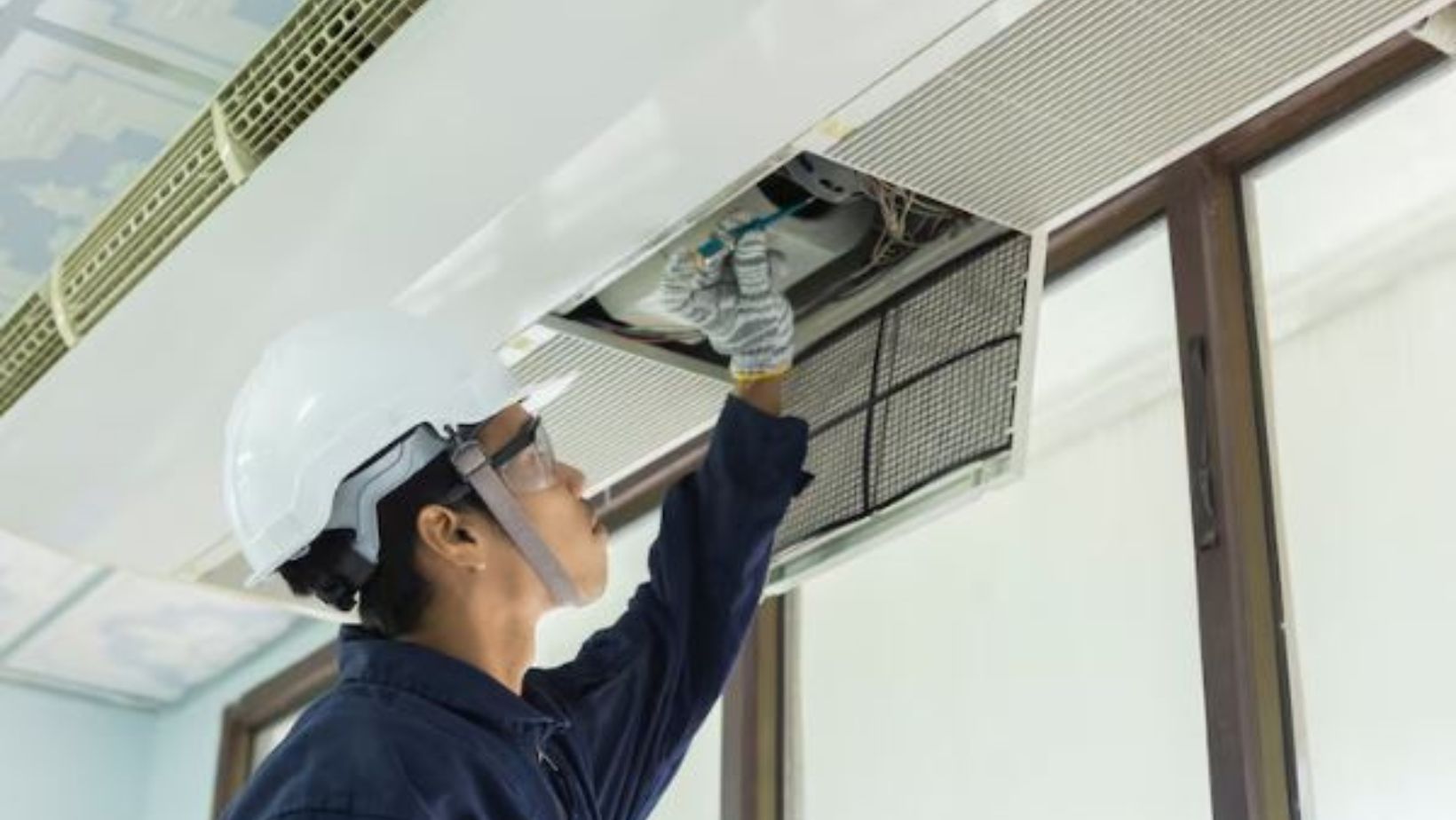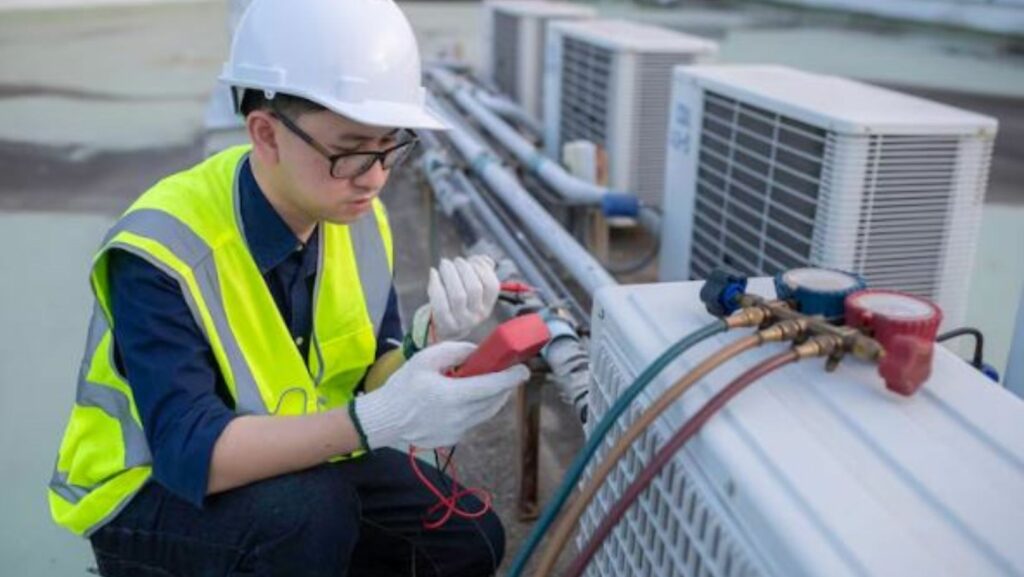Maintaining an optimal indoor climate is a critical aspect of comfort and efficiency in both residential and commercial settings. While HVAC (Heating, Ventilation, and Air Conditioning) systems have long been the go-to solution for managing indoor temperatures, spot cooling fans have become an increasingly valuable addition to many climate control strategies. The integration of Industrial Fans Direct with HVAC systems offers the potential for enhanced comfort, energy efficiency, and overall performance. In this article, we’ll explore the benefits of combining spot cooling fans with HVAC systems, as well as the considerations and best practices for achieving the best possible indoor climate.
Understanding the Role of HVAC Systems and Spot Cooling Fans
HVAC systems are designed to regulate the temperature, humidity, and air quality within a building, providing both heating and cooling functions. These systems work by circulating air through ductwork or through localized units, depending on the type of HVAC system. While HVAC systems are highly effective at maintaining a comfortable temperature in larger spaces, they may not always provide the level of precision needed to achieve optimal comfort in specific areas.
Spot cooling fans, including Industrial Fans Direct, offer a targeted approach to cooling, focusing on cooling specific zones or areas within a building. These fans are ideal for providing extra cooling in areas with high foot traffic, equipment heat load, or specific climate control needs. Spot cooling fans direct airflow to particular spaces or workstations, helping reduce discomfort, increase productivity, and create a more comfortable working environment.
The integration of Industrial Fans Direct with existing HVAC systems can provide numerous benefits, enhancing temperature regulation and energy efficiency.
The Benefits of Integrating Spot Cooling Fans with HVAC Systems
1. Enhanced Comfort and Precision
One of the primary advantages of integrating spot cooling fans with HVAC systems is the ability to achieve greater comfort in specific zones. While an HVAC system can maintain a relatively constant temperature throughout a building, it may struggle to reach the precise cooling requirements of smaller spaces. For instance, office workstations, server rooms, and manufacturing areas may need additional cooling due to heat generated by equipment or high occupancy levels.
Industrial Fans Direct can be placed in these targeted areas, providing a focused blast of cool air. The ability to adjust the fan’s airflow to meet the needs of specific zones ensures that these areas are consistently comfortable. This precise cooling enhances occupant comfort and can prevent hotspots that can arise in areas that are harder for the HVAC system to reach effectively.
2. Improved Energy Efficiency
When used in conjunction with HVAC systems, Industrial Fans Direct can help reduce energy consumption. HVAC systems, particularly those running at full capacity, can be energy-intensive, especially in larger buildings. By providing supplemental cooling in targeted areas with spot cooling fans, building managers can reduce the overall load on the HVAC system, which may result in lower energy consumption and reduced utility bills.
Instead of cooling an entire building to compensate for a few hot spots, spot cooling fans provide localized cooling where it’s most needed, allowing the HVAC system to operate more efficiently. Additionally, spot cooling fans consume significantly less energy than air conditioning units, further reducing overall energy costs.
3. Increased Productivity and Performance
In workplaces, such as factories, offices, or laboratories, maintaining an optimal indoor climate is crucial for productivity. Extreme temperatures, especially heat, can negatively impact worker performance, concentration, and even health. Hot, stuffy environments can lead to discomfort, fatigue, and reduced cognitive function.
Integrating Industrial Fans Direct with HVAC systems can create a more comfortable environment, boosting worker productivity. These fans ensure that critical areas, such as workstations and machinery zones, are adequately cooled, leading to improved concentration and fewer heat-related distractions. This is particularly important in environments where consistent performance is essential, such as in manufacturing or data centers.
4. Better Humidity Control
Humidity levels are as crucial to indoor comfort as temperature. High humidity can make temperatures feel warmer than they actually are, leading to discomfort. An HVAC system typically helps regulate humidity, but it may not always be sufficient in areas with high moisture levels or in spaces where specific humidity levels are required for equipment or processes.
Industrial Fans Direct can assist in controlling humidity by circulating air and preventing stagnant conditions that can lead to higher humidity levels. This can be particularly beneficial in spaces like warehouses, kitchens, or industrial facilities where humidity control is vital for product storage or comfort.

How to Integrate Spot Cooling Fans with HVAC Systems
While the benefits of integrating Industrial Fans Direct with HVAC systems are clear, it’s important to carefully plan and implement the integration to ensure optimal results. Here are some best practices and considerations for combining these two systems:
1. Identify High-Need Areas for Spot Cooling
The first step in integration is identifying which areas of the building would benefit most from spot cooling. Spot cooling fans are most effective in areas where specific cooling needs arise due to factors such as high equipment heat loads, large numbers of occupants, or areas that the HVAC system may not reach efficiently.
For example, in a data center, servers generate significant amounts of heat, and a traditional HVAC system may not adequately address these localized heat zones. Industrial Fans Direct can be placed near these heat sources to ensure that the cooling is focused where it’s most needed, without having to cool the entire building.
2. Ensure Compatibility Between the Fan and HVAC Systems
Not all spot cooling fans are compatible with every HVAC system. Before choosing Industrial Fans Direct for integration, ensure that the fans are suitable for the size of the area and are able to distribute airflow in a manner that complements the HVAC system. Pay attention to fan size, airflow capacity, and control options to ensure that they can be seamlessly incorporated into your existing system.
In some cases, it may be necessary to install additional ductwork or vents to optimize the distribution of cool air from the HVAC system to the areas where the spot cooling fans are located.
3. Adjust Thermostat Settings for Optimal Performance
When integrating Industrial Fans Direct with your HVAC system, make sure that the thermostat settings are adjusted to account for the supplemental cooling provided by the spot fans. It may be beneficial to raise the thermostat set point slightly, as the spot cooling fans will help regulate the temperature in targeted areas, reducing the need for the HVAC system to overcompensate by lowering the temperature throughout the entire building.
Adjusting the thermostat and optimizing the airflow from both systems will allow for a more energy-efficient and cost-effective cooling solution.
4. Regular Maintenance and Monitoring
To ensure that both your HVAC system and Industrial Fans Direct operate efficiently, regular maintenance and monitoring are essential. HVAC systems require periodic servicing, such as cleaning filters, checking refrigerant levels, and inspecting ductwork for leaks. Similarly, spot cooling fans need regular cleaning to ensure that dust, dirt, and debris don’t obstruct airflow or reduce performance.
Additionally, monitoring the performance of both systems will help you identify any potential issues or inefficiencies that could arise. If the spot cooling fans are not providing the desired effect, it may be necessary to reposition them, adjust airflow settings, or choose different models that better complement your HVAC system.
Case Studies of Effective Integration
1. Warehouse and Distribution Centers
In large warehouses and distribution centers, HVAC systems are typically used to maintain a general temperature across the facility. However, these spaces often contain areas where high heat is generated due to machinery, equipment, or large numbers of workers. In such cases, integrating Industrial Fans Direct can improve cooling efficiency and reduce energy consumption. These fans can be placed in hot spots to focus airflow, ensuring that specific areas are cooled without having to overwork the HVAC system.
2. Office Buildings
Office buildings often face the challenge of maintaining a comfortable temperature for large numbers of people, especially in spaces with multiple workstations or meeting rooms. By integrating spot cooling fans with the HVAC system, office managers can ensure that employees in high-traffic areas, such as conference rooms or cubicles, receive focused cooling where it’s most needed. This combination allows the HVAC system to run more efficiently, reducing energy costs and improving comfort.
3. Data Centers
Data centers are critical environments that require precise temperature control to keep servers and IT equipment functioning optimally. In this setting, spot cooling fans can help provide direct cooling to areas with the highest heat load, such as near server racks. The integration of Industrial Fans Direct with the HVAC system ensures that the cooling is targeted and efficient, preventing overheating and maximizing system performance.
Conclusion
Integrating Industrial Fans Direct with HVAC systems is an effective solution for achieving optimal indoor climate control. By providing supplemental, targeted cooling in specific areas, spot cooling fans enhance comfort, improve energy efficiency, and increase productivity. The combination of these two systems allows building managers to optimize climate control, reduce energy consumption, and create a more comfortable environment for occupants. Whether in an office, warehouse, or data center, the integration of spot cooling fans with HVAC systems is a smart investment that can lead to long-term benefits.

